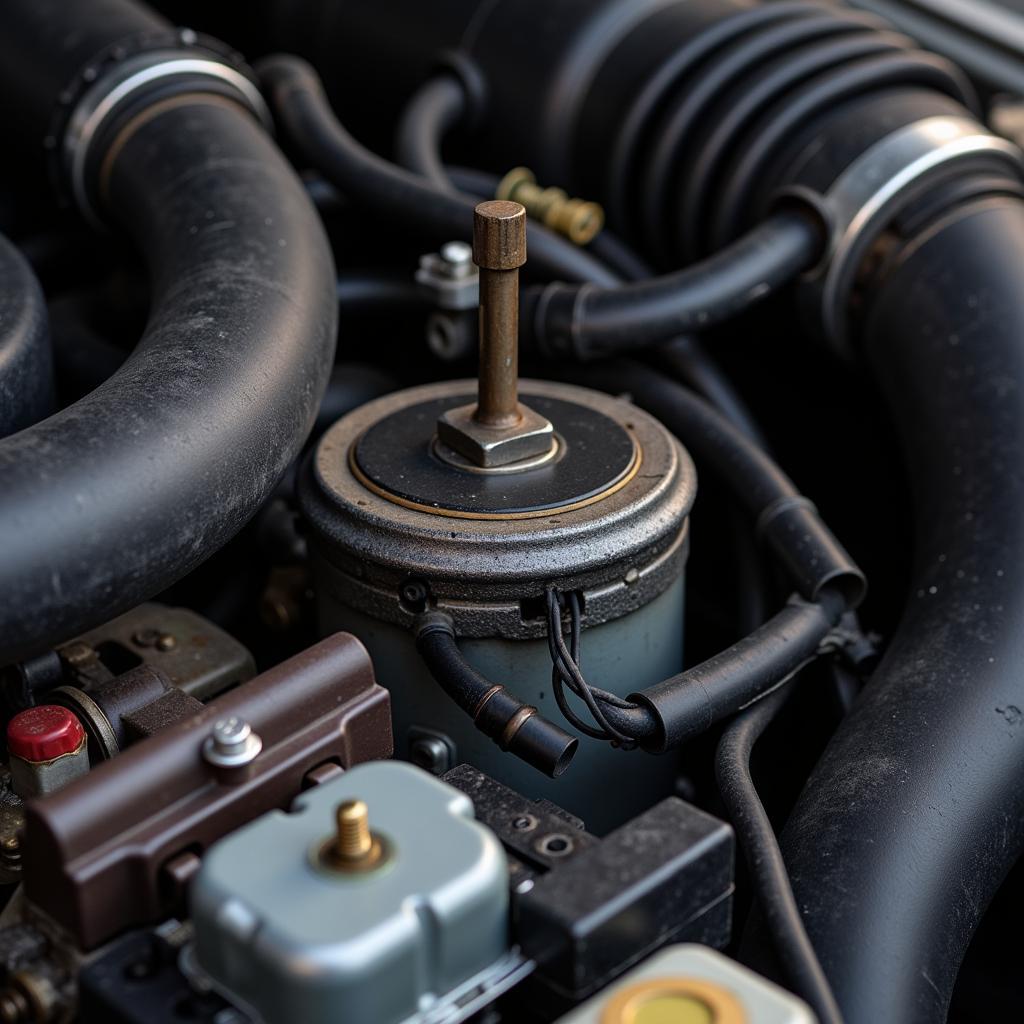Car Engine Crank Problems can be frustrating and leave you stranded. This guide will delve into the common causes, symptoms, diagnostic procedures, and solutions for these issues, empowering you to troubleshoot effectively and get back on the road.
 Car Engine Crank No Start
Car Engine Crank No Start
Understanding the Cranking Process
Before we dive into the problems, let’s understand how the cranking system works. When you turn the ignition key, the starter motor engages with the engine’s flywheel, rotating the crankshaft and initiating the combustion process. A healthy cranking system should produce a consistent, rapid spinning sound. Any deviation from this norm indicates a potential problem. Have you ever experienced a slow crank or no crank at all? These are telltale signs of car engine crank problems. Check out our article on crankshaft problems car for more information.
Common Causes of Car Engine Crank Problems
Several factors can contribute to car engine crank problems. These include:
- Dead Battery: This is the most common culprit. A weak or dead battery lacks the power to turn the starter motor effectively.
- Faulty Starter Motor: A worn-out starter motor can struggle to engage or produce insufficient torque to crank the engine.
- Corroded Battery Terminals: Corrosion on battery terminals impedes the flow of electricity to the starter.
- Bad Ignition Switch: A malfunctioning ignition switch can prevent power from reaching the starter motor.
- Wiring Issues: Damaged or loose wiring in the starting circuit can disrupt the flow of power. Understanding the signs of car electrical problems can help you pinpoint the issue.
“A simple battery test can save you a lot of time and headache,” advises Robert Johnson, a seasoned automotive technician with over 20 years of experience.
Diagnosing Car Engine Crank Problems
Diagnosing the root cause requires a systematic approach:
- Check the Battery: Start by testing the battery voltage using a multimeter. A reading below 12.4 volts indicates a weak battery.
- Inspect the Terminals: Examine the battery terminals for corrosion. Clean them with a wire brush if necessary.
- Test the Starter Motor: If the battery is good, the next step is to test the starter motor. This can be done using a starter motor tester or by bypassing the ignition switch.
- Check the Ignition Switch: If the starter motor checks out, test the ignition switch for continuity.
- Inspect the Wiring: Carefully examine the wiring in the starting circuit for any damage or loose connections.
“Don’t overlook the basics,” reminds Maria Sanchez, an electrical systems specialist. “Often, the simplest solutions are the most effective.”
Solving Car Engine Crank Problems
Once you’ve identified the cause, the solution can range from a simple fix to a more complex repair:
- Replace the Battery: If the battery is dead or weak, replace it with a new one.
- Repair or Replace the Starter Motor: A faulty starter motor may require repair or replacement.
- Clean the Battery Terminals: Clean corroded terminals with a wire brush and baking soda solution.
- Replace the Ignition Switch: A bad ignition switch needs to be replaced.
- Repair or Replace Damaged Wiring: Any damaged or loose wiring in the starting circuit should be repaired or replaced.
What if my car won’t start even after cranking?
Sometimes, even after addressing cranking issues, the car might not start. This can be due to a range of problems, such as fuel system issues, ignition problems, or sensor malfunctions. For more information on such scenarios, refer to our article on problems that would cause a car not to start. Also, issues with newer car models can sometimes stem from seemingly unrelated maintenance. Read about common car leeps havong problems after routine maintenance for more insights. If you own a Nissan Leaf, you might be interested in learning about common 2016 nissan leaf car problems.
Conclusion
Car engine crank problems can be tackled effectively with a systematic approach. By understanding the cranking process, common causes, and diagnostic procedures, you can troubleshoot the issue and get your car running smoothly again. If you need assistance with diagnosing or repairing car engine crank problems, don’t hesitate to contact AutoTipPro at +1 (641) 206-8880 or visit our office at 500 N St Mary’s St, San Antonio, TX 78205, United States.




Leave a Reply